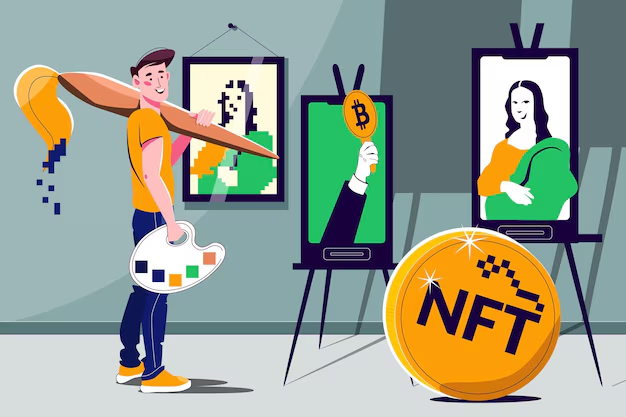NFTs: A Look into the February to October 2024 Market and the Future of Digital Ownership
The world of Non-Fungible Tokens (NFTs) continues to evolve at a rapid pace, shaping the way we think about digital ownership, art, and assets. From February to October 2024, the NFT market has seen notable shifts, influenced by technological advancements, new use cases, and changing public perception. In this article, we’ll take a look at the NFT landscape during this period and explore how these digital assets are transforming industries beyond art.
The Growth of NFT Marketplaces and Platforms
During the first few months of 2024, NFT marketplaces have become more user-friendly and accessible. Platforms like OpenSea, Rarible, and new contenders have updated their interfaces to offer improved browsing experiences, faster transactions, and lower fees. These improvements, combined with growing demand for digital collectibles, have contributed to a steady increase in marketplace activity, especially in the gaming, music, and fashion industries.
NFTs in gaming have been particularly exciting in this timeframe. Games like Axie Infinity and Decentraland continue to show the potential of NFTs as in-game assets, allowing players to truly own, trade, and monetize their digital items. With more mainstream developers joining the space, the concept of play-to-earn (P2E) has gained significant traction, making NFTs a key component of the gaming economy.
February to October 2024: Key NFT Trends
- Integration with Virtual Worlds and Metaverses: As virtual reality (VR) and augmented reality (AR) technologies improve, NFTs are being incorporated into digital worlds like never before. During the first half of 2024, projects such as The Sandbox and Somnium Space saw an influx of NFT-based land and property sales, allowing users to build and monetize their own virtual spaces. This integration has opened new avenues for creators and investors.
- NFTs in Fashion: A major trend that emerged between February and October 2024 is the collaboration between fashion brands and NFT artists. Major luxury fashion houses like Gucci and Prada have ventured into the world of digital fashion, releasing exclusive NFT collections that can be worn in virtual environments. These high-fashion digital items appeal to a younger, tech-savvy audience, marking a shift towards digital-first fashion.
- Environmental Impact and Sustainability: One of the ongoing concerns surrounding NFTs has been their environmental footprint. As blockchain networks, especially Ethereum, have faced criticism for their high energy consumption, there has been a noticeable shift towards more sustainable practices. Many NFT projects have moved to eco-friendly blockchains like Flow, Tezos, and Polygon, reducing the carbon footprint of minting and transacting NFTs.
- The Rise of Utility NFTs: Beyond collectibles and art, NFTs have evolved into more functional digital assets. From providing access to exclusive content and experiences to offering membership perks and rewards, utility NFTs have been gaining popularity. For example, some NFT projects now offer token holders access to virtual concerts, online communities, and even physical events, adding tangible value to digital ownership.
Regulatory and Legal Developments
As the NFT market continues to mature, regulatory bodies have started to take a closer look at digital assets. Between February and October 2024, several countries began drafting clearer guidelines to govern the creation, sale, and taxation of NFTs. This increased regulation aims to protect consumers and reduce fraud within the space. The future of NFTs will likely see more comprehensive laws and frameworks, especially regarding intellectual property rights, as creators and brands navigate the complexities of digital ownership.
The Future of NFTs
Looking ahead, NFTs are expected to continue shaping digital ownership across various sectors. From art to entertainment and even real estate, NFTs offer a new way of proving authenticity, ownership, and value in the digital realm. As more industries explore the potential of NFTs, the technology will likely become even more integrated into our daily lives.
The impact of NFTs from February to October 2024 has been transformative, and the market’s future holds even more promise. With technological advancements, increased adoption, and ongoing innovation, NFTs will continue to redefine what it means to own, create, and trade in the digital age.
In conclusion, NFTs are no longer just a passing trend. They are paving the way for a new era of digital ownership that will likely affect every sector, from art and entertainment to fashion and gaming. As the space matures, both creators and consumers can expect a more inclusive, diverse, and exciting NFT ecosystem.


